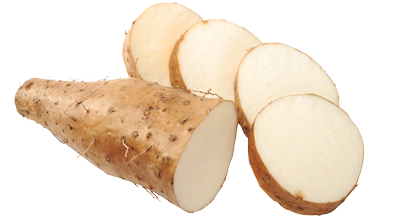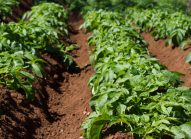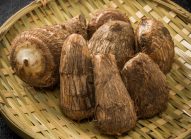Health
benefits
Yams make you feel good!
As a source of fiber and complex carbohydrates, yams bring balance to your diet while giving you energy. They make an excellent replacement for potatoes, in savory and sweet recipes alike.
A natural diuretic
As a low-sodium potassium source, yams have diuretic properties.
Yams are also
- a source of potassium (for the nervous system, muscular function, and blood pressure)
- a source of fiber (bowel movement regulation, satiety)
They also contain:
- vitamin B1 or thiamine and vitamin B6 (energy metabolism, nervous system)
- manganese (energy metabolism, healthy bones, antioxidant)
- antioxidants (polyphenols)
Nutritional
composition
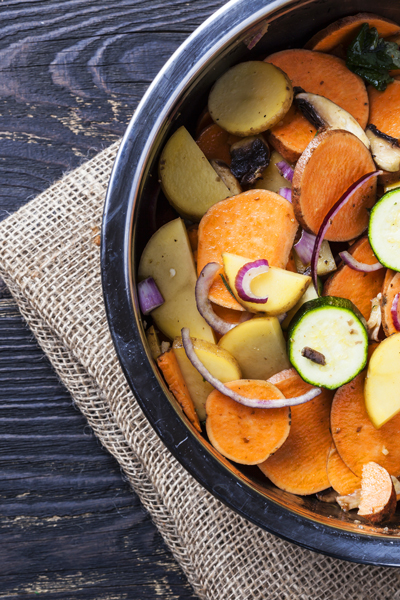
When is the right
time to eat them?
Fall.
Aerial tubers are harvested in October and tubers that grow in the ground from November through March.
-
January
-
February
-
March
-
April
-
May
-
June
-
July
-
August
-
September
-
October
-
November
-
December
Vegetable patch or
urban balcony?
Yams are herbaceous, climbing plants that grow well in cool, deep, light, well-drained, and neutral (pH = 7) soils that are rich in humus, in sunny spots.
To learn everything you need to know about growing yams, read the page on growing advice.
Choosing and
storing yams
Choosing your yams well:
- Choose firm yams without spots.
Properly store your yams:
- In a cool, dry place.
Anti-waste tips
Like with potatoes, the skin of yams can be eaten. So don’t throw them away!
- Put scrubbed yams in the oven to bake them in their jackets. Delicious served with fish and a yoghurt sauce.
- Make fritters by finely grating the yams, without removing the skin. Mix them with egg white, herbs and spices and fry the fritters in a frying pan.
- And why not try the Hasselback method? Cut thin strips along the long side of the yam, without cutting the ends. This means that the whole vegetable is preserved. Then sprinkle with oil, herbs and spices, and roast for 45 minutes.
WHAT IS THE ENVIRONMENTAL IMPACT?
The Product Environmental Footprint (PEF), a score established by Agribalyse*, tells us more! It takes account of all the phases in a vegetable’s life cycle: how it’s grown, the impact of its transport, the impact of its processing, and so on. The lower the score, the lower the environmental impact.
- Yam, raw (peeled): 0.09
- Yam, cooked: 0.14
- Steak, raw: 2.77
*Data taken from the Agribalyse database, which gives the environmental score of foodstuffs. This unique score is the average of 16 indicators, calculated using the European methodology PEF. It is not the same as an environmental label or “eco-score”.
CO2 equivalent: for 100g of raw yam: 0.066 kg of CO2 eq, which is the same as 1.9 g of steak or driving 264 m by car
TIPS AND
TRICKS
How to cook yams
Cook them the same way as potatoes! Their skin is tough. It is best to cook them first so that the skin can be easily removed after cooking. However, it takes less time to cook yams than potatoes.
After cooking, the flesh is no longer slimy.
Yams go well with…
Sautéed, roasted in their skins or in aluminum foil like potatoes, they make a wonderful accompaniment for grilled meats and fish.
They also make for creamy blended and other kinds of soups.
In salads, yams can be cut into rounds, sprinkled with fresh herbs (especially chives), and seasoned with olive oil, sea salt, and lemon juice.
Sweeter than potatoes, they can be used to make unique desserts (cookies, cakes, crêpes, and more).
Can everyone
eat them?
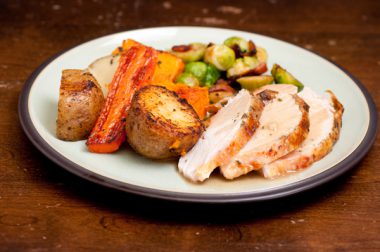
Young children
Yams will add their unique sweet flavor to vegetable purées that children can enjoy starting at six months of age.
And everyone else
Yams can be used in the same ways as potatoes in the kitchen, meaning that everyone, regardless of age, can find a way they like them!
See plenty of other tips for encouraging children to eat vegetables
Where do they come from?
Origins and varieties
Origins: Yams are tubers that are mainly produced in West Africa (over 95% of world production). The American continent is the second largest producer, followed by Europe.
Varieties: There are many varieties of yams in tropical and subtropical regions. The plants differ by the section and external appearance of the stems—more or less round and spiny—the shape of their leaves, the position of the stem, the color of the tuber (brown, red, yellow, pinkish, grey or black), and their poison content.
The extreme diversity of the color itself of yams is quite surprising: from shiny white to blood red to spring green to ebony, there is truly something for everyone!
